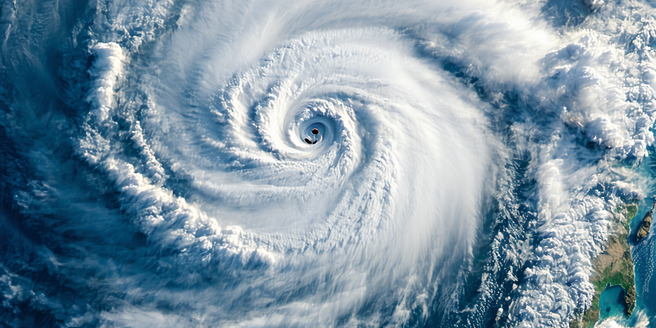
Understanding Extreme Weather Patterns
Extreme weather patterns are becoming more frequent and severe due to climate change. Understanding these patterns is crucial for mitigating their impacts. Researchers focus on the causes of extreme weather, such as atmospheric dynamics and ocean temperatures. They utilize advanced technologies, like satellite imagery and climate models, to analyze and predict these phenomena. Accurate predictions help governments and communities prepare for potential disasters like hurricanes, droughts, and floods. Public awareness campaigns also play a critical role in educating people about weather patterns, enabling them to take preventive actions. Understanding these patterns involves a multidisciplinary approach, integrating meteorology, oceanography, and environmental sciences. With continuous research, we improve our ability to forecast and adapt to these growing challenges.
Impact of Technology on Climate Monitoring
Climate monitoring has significantly improved with technological advancements. Enhanced satellite technologies provide high-resolution data, allowing for precise tracking of atmospheric changes and oceanic patterns. Remote sensing tools help monitor climate variables like temperature, precipitation, and storm intensity in real time. These technologies contribute to more accurate climate models and better predictions of extreme weather events. Drones equipped with sophisticated sensors capture data in hard-to-reach areas, providing valuable insights into climate dynamics. Additionally, data analytics and machine learning algorithms optimize the analysis of large datasets, uncovering trends that inform climate policy and action. Improved climate monitoring technology is vital for effective climate change mitigation and adaptation efforts, offering valuable information to policymakers, scientists, and the public.
Advanced Weather Forecasting Tools
Advanced weather forecasting tools have transformed how we predict weather events. Modern meteorological models incorporate vast amounts of data from satellites, radar, and weather stations worldwide. These models simulate the atmosphere, predicting weather conditions with unprecedented accuracy. Supercomputers process this data quickly, enabling rapid and detailed forecasts. Additionally, innovations like high-resolution models and ensemble forecasting improve reliability and help gauge uncertainties in predictions. Mobile apps and online platforms distribute these forecasts to the public in real time, enhancing preparedness for severe weather. With continuous upgrades and integration of AI technologies, forecasting tools are becoming more sophisticated, offering invaluable insights for sectors like agriculture, aviation, and disaster management. These tools help mitigate risks and safeguard communities against adverse weather impacts.
Innovations in Disaster Preparedness
Disaster preparedness has evolved with technological innovations, enhancing community resilience against extreme weather events. Early warning systems are now more robust, utilizing real-time data from satellites and weather stations to alert populations of impending threats. Geographic Information Systems (GIS) map vulnerable areas, assisting in evacuation planning and resource allocation. Mobile technology enables efficient communication, ensuring timely dissemination of critical information to at-risk populations. Social media platforms also play a role in spreading awareness and updates during emergencies. Furthermore, virtual simulations and AI technologies are employed for disaster scenario planning, enhancing response strategies. Community education programs integrate technology to train individuals on preparedness measures. These innovations not only improve disaster response but also contribute to long-term resilience, minimizing the adverse impacts of extreme weather.
Role of AI in Managing Weather Risks
Artificial Intelligence (AI) plays a pivotal role in managing weather risks, offering sophisticated analysis and prediction capabilities. AI algorithms process massive datasets from diverse sources—including satellites, weather stations, and ocean buoys—to improve weather forecasts. Machine learning models identify patterns and anomalies, enhancing the accuracy of predictions for extreme weather events like hurricanes, floods, and heatwaves. AI also aids in resource allocation, optimizing disaster response strategies and ensuring efficient use of emergency supplies. In agriculture, AI-driven tools help farmers make informed decisions based on real-time weather trends, reducing crop damage risks. Furthermore, AI supports climate research by analyzing complex environmental data, aiding in the development of adaptive strategies for climate change. Overall, AI is a transformative force in mitigating weather-related risks and enhancing resilience.
Future Prospects for Weather Technology
The future of weather technology holds promising advancements, driven by innovation and research. Quantum computing is set to revolutionize climate modeling, enabling more complex and accurate simulations of atmospheric phenomena. Continued development in satellite technology will offer higher resolution imaging, improving data accuracy for weather predictions. The integration of the Internet of Things (IoT) will lead to interconnected sensor networks, providing real-time environmental data for precise forecasts. Additionally, advancements in renewable energy sources will power more sustainable and efficient weather monitoring stations. AI will continue to enhance predictive analytics, making forecasts more reliable and actionable. Collaboration between global research institutions will accelerate technological development, paving the way for cutting-edge solutions to weather challenges. These prospects promise to significantly enhance our capability to forecast, adapt to, and mitigate the effects of extreme weather.
